
Eagle Feathers #242 – Row On Row
By Bob (Monty) Doherty
To an American, a row is a number of objects arranged in a typically straight line; and to an Englishman, a row is a noisy argument or fight.
- On September 1, 1774, British General Thomas Gage sent a row of thirteen boats carrying two hundred soldiers up the Mystic River. The force landed at Ten Hills Farm. They next marched to the Colonial Powder House and raided 240 half-barrels of gunpowder. They then brought it back to Castle William in Boston Harbor.
This provocation caused a great Minutemen assembly in arms the next day. It was eight months before the battle of Lexington and Concord when another row of Minutemen would stand their ground. In essence, the Powder House attack was the dress rehearsal of the coming revolution.
*
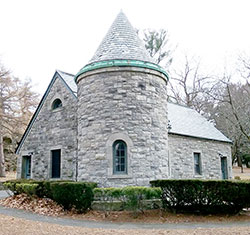 *
*
- The all-day conflict of April 19, 1775, was called Battle Row. It was fought from the Concord Bridge to Somerville at Charlestown Neck. Its path traced Elm Street, Somerville Avenue, Bow Street and Washington Street.
- Through the years, the reference of row has been common. Bow Street was once called Doctors Row. It was named because of the convergence of seven doctors residences located there. On this street, there is also a curved row house named Crescent Row.
*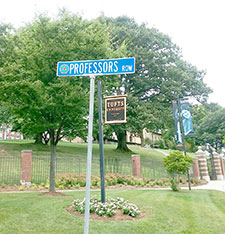 *
*
- Over 150 years ago in West Somerville, the first president of Tufts University lived on Professors Row. This was followed by additional housing occupied by the university’s highest-ranking educators. Today, it also sports the name Fraternity Row. During the war years, the university drilled and educated hundreds of men in the Reserve Officers Training Corps (ROTC). Some of the fraternity houses still have memorials honoring them.
*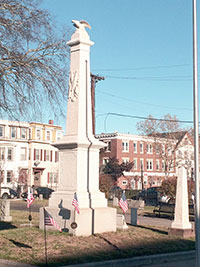 *
*
- The most historical row in the city was Milk Row, formerly part of Battle Row, which is now Somerville Avenue. In its heyday, milk was a vital staple of the time. Many dairy companies established their businesses along Milk Row and built their homes nearby.
- In 1872, the year Somerville became a city, Boston was devastated by the worst fire in its history. It destroyed 776 buildings and burned over 60 acres. Because of this destruction, fire-retardant brick row houses were approved and used in its rebuilding. They also became popular in East Somerville, the Beacon Street area and Winter Hill.
*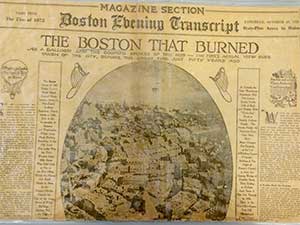 *
*
- Assembly Row, the city’s newest row, is rising like a phoenix out of the Mystic River’s shore. It features shopping, living, and dining.
*
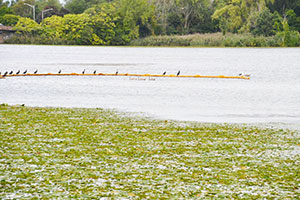 *
*
- Eighty years ago on December 7, 1941, America was launched into a two-front war with Japan and Germany that would change the country forever. Japanese planes crippled Pearl Harbor’s Battleship Row, which was the eight-ship pride of the Navy’s Pacific Fleet. This day is memorialized with the white-cross markers arranged row on row in military cemeteries across the world … It is a day that will remain in infamy!

 *
* *
* *
* *
* *
*
Reader Comments